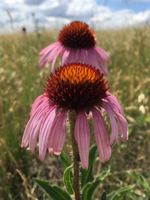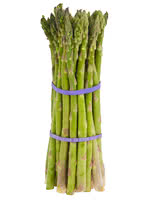Mon-Fri 9am - 5pm Mountain time
Narrow-Leaved Coneflower (Echinacea) vs Mary Washington Asparagus
Echinacea angustifolia
Asparagus officinalis Mary Washington
NOT AVAILABLE THIS SEASON - MIGHT RETURN
NOT AVAILABLE THIS SEASON - MIGHT RETURN
Narrow-Leaved Coneflower is a native perennial wildflower known for its pink to pale purple, daisy-like blooms. The petals (rays) droop downwards, around a dark, domed center, giving the flower a cone-like appearance. The nectar-rich blossoms attract a wide variety of pollinators, including native bees and butterflies. After flowering, the seeds provide food for birds, further adding to its ecological value.
Once established, it is drought-tolerant due to its deep taproot, which also helps stabilize soil. Narrow-Leaved Coneflower thrives in a variety of well-drained soils, including sandy, rocky, and alkaline. It often grows alongside the native grasses that characterize prairie and grassland ecosystems, making it well-suited for prairie and grassland restoration, naturalization, and pollinator gardens.
The Mary Washington Asparagus is a perennial vegetable that produces edible shoots or spears that may be harvested in April-May. This plant is an heirloom which produces large green stalks that can be harvested earlier than other asparagus cultivars, and the spears feature a crisp, nutty flavor. There are male and female plants, and the females can grow into towering ferns after going to seed for the year.
The Mary Washington Asparagus gets its name from the mother of George Washington, who was married to the plant breeder Augustine Washington. For a more reliable asparagus crop, it is recommended that you don’t harvest in the first year and allow it to establish its root systems.

